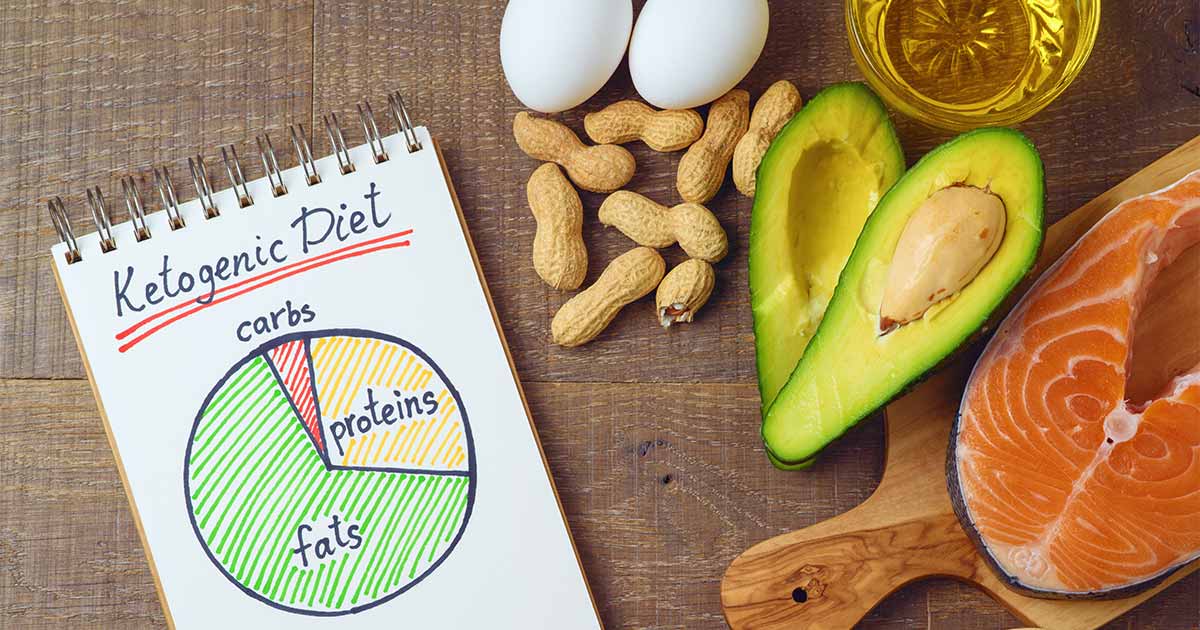The ketogenic, or keto, diet has surged in popularity in recent years, attracting a diverse following of individuals seeking weight loss, improved health, and increased energy levels. This low-carbohydrate, high-fat eating plan aims to shift the body’s primary fuel source from glucose to ketones, promoting a state of ketosis that can yield numerous benefits. If you’re considering embarking on a keto journey, this detailed beginner’s guide will provide you with all the information you need to get started and make informed decisions about your new dietary lifestyle.
What Is the Ketogenic Diet?
The ketogenic diet is a low-carb, high-fat, moderate-protein eating plan that encourages the body to burn fat for fuel instead of carbohydrates. By drastically reducing carbohydrate intake and increasing fat consumption, the body enters a metabolic state called ketosis. In this state, the liver converts fat into molecules called ketones, which serve as an alternative energy source for the brain and other organs.
There are several variations of the ketogenic diet, with the most common being the Standard Ketogenic Diet (SKD), which typically consists of 70-75% fat, 20-25% protein, and 5-10% carbohydrates. Other variations include the Cyclical Ketogenic Diet (CKD), Targeted Ketogenic Diet (TKD), and High-Protein Ketogenic Diet, each catering to specific needs and preferences.
Benefits of the Ketogenic Diet
The keto diet offers a range of potential health benefits, including:
- Weight Loss: The keto diet can promote significant weight loss by encouraging the body to burn stored fat for energy.
- Blood Sugar Control: By limiting carbohydrate intake, the keto diet can help stabilize blood sugar levels, making it a suitable option for individuals with type 2 diabetes or prediabetes.
- Improved Heart Health: Consuming healthy fats on the keto diet can contribute to better heart health by improving cholesterol levels.
- Enhanced Brain Function: Ketones produced during ketosis can provide an efficient fuel source for the brain, potentially leading to improved cognitive function and focus.
- Increased Energy Levels: Many keto dieters report experiencing increased and sustained energy levels throughout the day.
Foods to Eat on the Ketogenic Diet
When following a keto diet, it’s essential to consume nutrient-dense, high-fat foods while minimizing carbohydrate intake. Some keto-friendly foods to incorporate into your meals include:
- Fatty meats like beef, pork, and lamb
- Poultry, such as chicken and turkey
- Fatty fish like salmon, mackerel, and sardines
- Eggs
- Full-fat dairy products, including cheese, butter, and heavy cream
- Nuts and seeds, like almonds, walnuts, chia seeds, and flaxseeds
- Healthy oils, such as olive oil, coconut oil, and avocado oil
- Low-carb vegetables, like leafy greens, cauliflower, broccoli, and zucchini
- Avocados
- Low-carb fruits, such as berries and olives
Foods to Avoid on the Ketogenic Diet
To maintain ketosis, it’s crucial to avoid high-carbohydrate foods that can quickly exceed your daily carb limit. Some foods to avoid or minimize on the keto diet include:
- Grains, such as rice, pasta, bread, and cereal
- Starchy vegetables, like potatoes, corn, and peas
- High-sugar fruits, including bananas, apples, and grapes
- Legumes, like beans, lentils, and chickpeas
- Sugary beverages, such as soda, fruit juice, and sports drinks
- Sweets and desserts, like cookies, cakes, and ice cream
- Processed and refined oils, including canola, soybean, and sunflower oil
Tips for Getting Started on the Ketogenic Diet
Transitioning to a keto diet can be challenging, but with a few helpful tips, you can set yourself up for success:
- Plan Your Meals: Create a weekly meal plan that includes keto-friendly recipes and snacks to ensure you stay on track with your macronutrient goals.
- Track Your Macros: Use a food diary or app to track your daily carbohydrate, fat, and protein intake to help maintain ketosis.
- Stay Hydrated: Drink plenty of water to support digestion, prevent dehydration, and alleviate symptoms of the “keto flu” during the initial transition to ketosis.
- Electrolyte Balance: Ensure you consume adequate amounts of sodium, potassium, and magnesium to maintain electrolyte balance and reduce potential side effects like muscle cramps and fatigue.
- Be Patient: Transitioning into ketosis can take time, and it’s normal to experience some side effects like fatigue, headaches, and irritability during the first few weeks. Stick with your plan, and these symptoms should subside as your body adapts to burning fat for fuel.
Conclusion
The ketogenic diet offers a unique approach to weight loss and improved health by focusing on high-fat, low-carbohydrate foods that promote ketosis. By understanding the basics of the keto diet and making informed food choices, you can embark on a successful keto journey and potentially experience the many benefits this way of eating has to offer. Remember, always consult with a healthcare professional before making significant dietary changes, especially if you have any existing health conditions or concerns.
